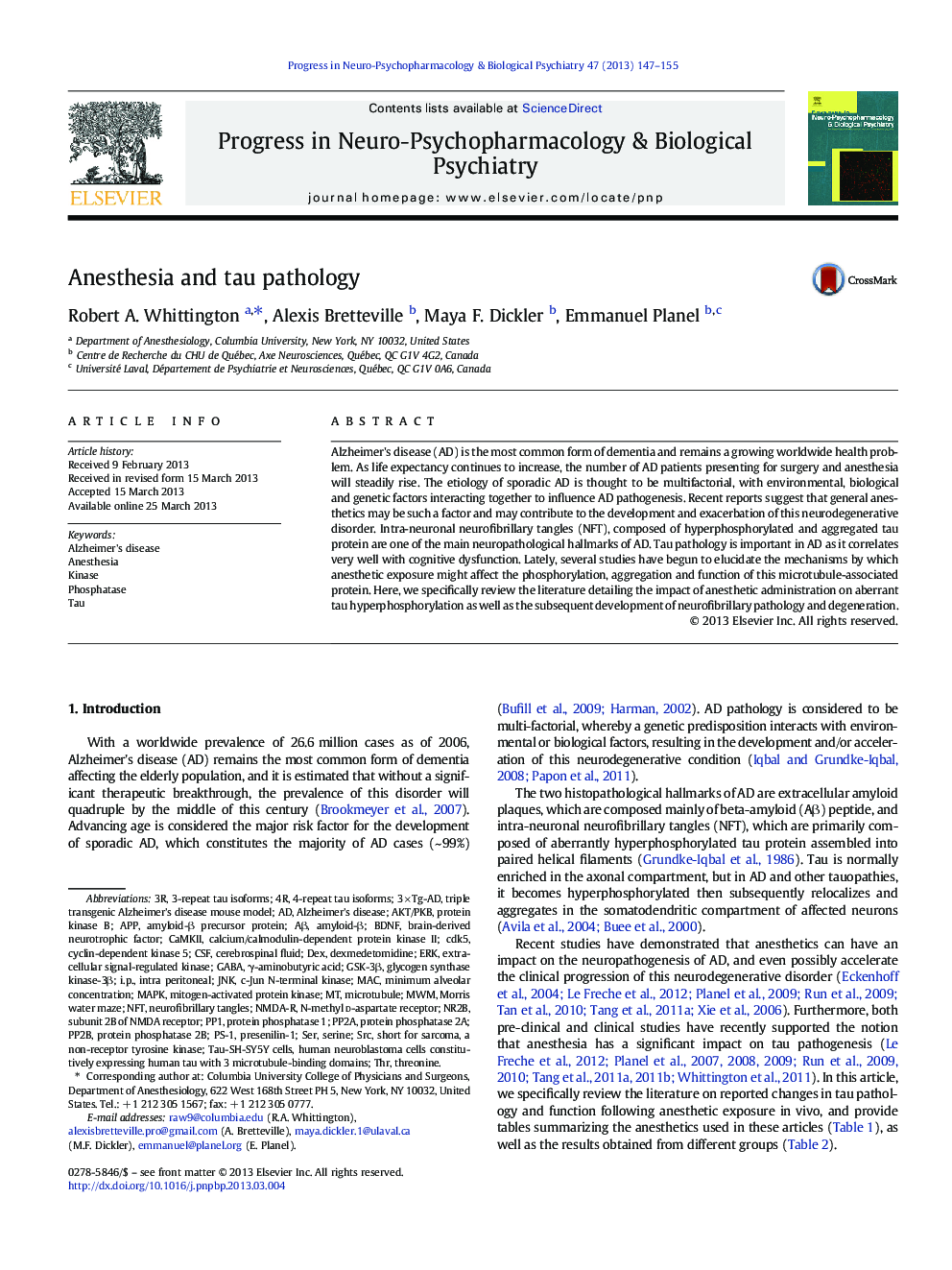| کد مقاله | کد نشریه | سال انتشار | مقاله انگلیسی | نسخه تمام متن |
|---|---|---|---|---|
| 2564883 | 1561047 | 2013 | 9 صفحه PDF | دانلود رایگان |

• Anesthesia has been suggested to induce Alzheimer's disease pathology.
• Herein we review the literature on the impact of anesthesia on tau pathology.
• Anesthesia has been shown to induce tau hyperphosphorylation in vivo and in vitro.
• More clinical evidence linking anesthesia to an increase in tau pathology is needed.
Alzheimer's disease (AD) is the most common form of dementia and remains a growing worldwide health problem. As life expectancy continues to increase, the number of AD patients presenting for surgery and anesthesia will steadily rise. The etiology of sporadic AD is thought to be multifactorial, with environmental, biological and genetic factors interacting together to influence AD pathogenesis. Recent reports suggest that general anesthetics may be such a factor and may contribute to the development and exacerbation of this neurodegenerative disorder. Intra-neuronal neurofibrillary tangles (NFT), composed of hyperphosphorylated and aggregated tau protein are one of the main neuropathological hallmarks of AD. Tau pathology is important in AD as it correlates very well with cognitive dysfunction. Lately, several studies have begun to elucidate the mechanisms by which anesthetic exposure might affect the phosphorylation, aggregation and function of this microtubule-associated protein. Here, we specifically review the literature detailing the impact of anesthetic administration on aberrant tau hyperphosphorylation as well as the subsequent development of neurofibrillary pathology and degeneration.
Journal: Progress in Neuro-Psychopharmacology and Biological Psychiatry - Volume 47, 2 December 2013, Pages 147–155